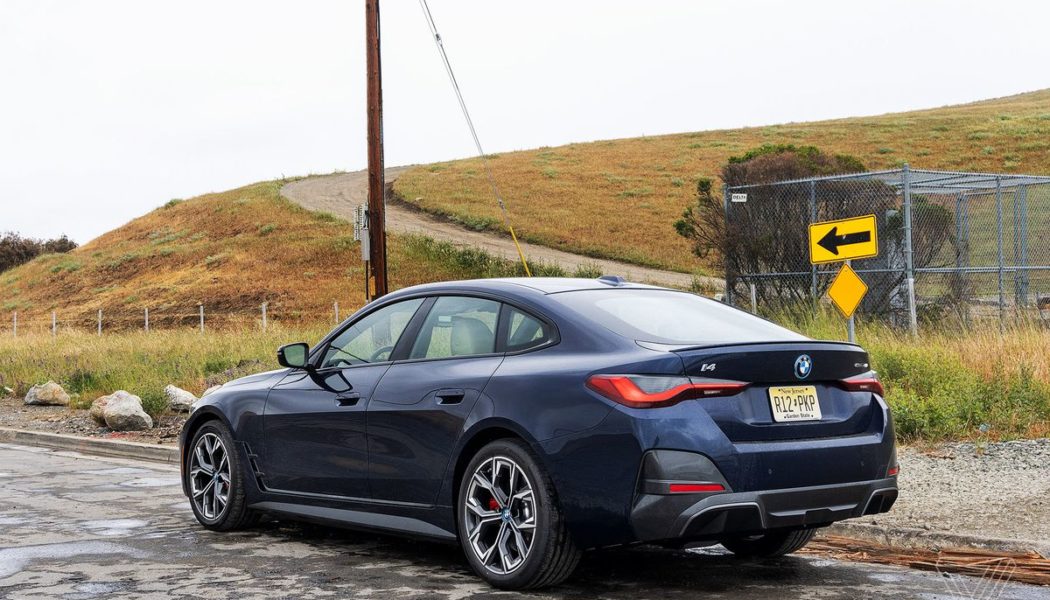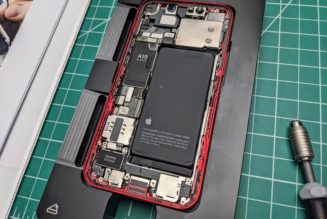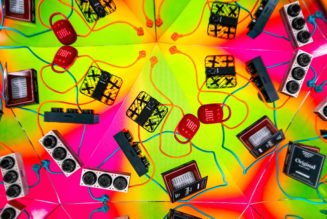On the road, the 2022 BMW i4 eDrive40 looks like any other 4 Series. There’s a reason the four-door sedan with its gigantic kidney grilles and sleek roofline commands is one of the automaker’s best-selling vehicles. It looks the part of a German sedan, and the EV version of the vehicle is the fruit of the automaker’s desire to build a platform that can accept any powertrain. Except, this is the best 4 Series.
While the push for electric SUVs continues, not every driver wants to sit above cars and haul all that extra weight around. There are real competitors for the BMW sedan — namely, the Tesla Model 3, Mercedes EQE, and Polestar 2. All of these vehicles are courting the midlevel luxury buyer who’s likely looking for either something a bit more sporty than an SUV or at least something different.
Unlike its competitors, the i4 doesn’t telegraph its electric underpinnings on the road. Without close-up inspection of the badging, it’s just another 4 Series. Yes, the superfluous kidney grille nearly swallows the front of the sedan. But, once you get past that (both physically and mentally), the i4 is a sleek sedan with a coupe roofline that looks magnificent and defies its own specs.
:no_upscale()/cdn.vox-cdn.com/uploads/chorus_asset/file/23600007/rbaldwin_220414_5255_0005.jpg)
Evolving platforms
The i4 — along with the more futuristic iX electric SUV — is part of the second generation of BMW EVs. After years of promising to deliver an architecture that would accept multiple powertrains, BMW has handily pulled it off. While there’s the tendency to think that this means the i4 is a compromised EV, the German automaker did something slightly amazing. The i4 drives like a proper BMW sport sedan while delivering impressive efficiency. They did all this in a package that, at the factory, could have easily been outfitted with a gas engine.
The automaker is already planning for the next stage in its EV evolution. The third phase is called the Neue Klasse. The first vehicle of the dedicated EV platform should arrive in 2025. Ahead of that, the automaker plans to have a dozen fully electric vehicles on the road globally by 2023, including EV versions of the 5 Series and X1 compact SUV.
Specs be damned touring EV
On the road, the i4 presents itself as a grand tourer. Fortunately, it has the range for most road trips. On 18-inch wheels, the EPA reports that the sedan will cover 301 miles before depleting its battery. The review vehicle offered by the automaker was sporting the larger 19-inch wheels, which the EPA states bring the range down to 282 miles. Larger wheels typically reduce a vehicle’s range.
In my real-world range test that included 50 miles of highway driving at 70 miles per hour and 50 miles of backroad and suburban driving, the i4 delivered a range of 303 miles. That’s a 21-mile increase over the EPA’s estimated range.
The battery pack itself has 83.9kWh of capacity gross and 81.5kWh of capacity that the vehicle can tap into on a daily basis.
While the vehicle is sitting on a 400-volt platform, it still manages to accept up to 200kW of power via DC fast charging, according to BMW. In our test, the i4 bested that number, charging at 210kW — again defying expectations.
:no_upscale()/cdn.vox-cdn.com/uploads/chorus_asset/file/23600011/rbaldwin_220414_5255_0009.jpg)
:no_upscale()/cdn.vox-cdn.com/uploads/chorus_asset/file/23600012/rbaldwin_220414_5255_0010.jpg)
:no_upscale()/cdn.vox-cdn.com/uploads/chorus_asset/file/23600006/rbaldwin_220414_5255_0004.jpg)
It’s not as quick at replenishing its battery as the Tesla Model 3, which tops off at 250kW. But it is speedier than the Polestar 2 and Mercedes EQE, with 155kW and 170kW charge rates, respectively. Sitting solidly in the center of the pack, the i4 doesn’t wow with charging rates like the Tesla and offerings from Kia and Hyundai; however, it does combine better than anticipated range and charge rates that should squelch any road trip anxieties.
At home, the onboard charger supports level 2 AC charging at up to 11kW. BMW states that charging time from zero to 100 percent will take about 8.25 hours — more than enough time for the i4 to be ready to go in the morning.
Smart sports sedan
BMW prides itself on building the “ultimate driving machine” — a luxury German brand that puts the experience of drivers front and center. It takes the “sports” portion of sports sedan seriously, and the i4 is proof that, even as an EV, BMW wants you to be engaged. Available in two flavors, I called in the i4 eDrive40 over the more performance-driven i4 M50, the second being the first M-branded EV from the automaker.
I’ve driven the dual-motor, all-wheel-drive M50, and it definitely lives up to the M pedigree with 536 horsepower and a zero to 60 time of 3.7 seconds. But for most, the eDrive40 delivers a great driving experience without the extra oomph of a second motor.
The rear-wheel-drive i4 has 335 horsepower and can get up to 60 miles per hour in 5.5 seconds — not record-breaking but enough to handle around 95 percent of driving scenarios. The eDrive40 starts at $55,400 while the M50 variant starts at $65,900.
On the road, the i4 eDrive40 might have the raw power of the M50, but it’s a blast on backroads in Sport mode. The rear-wheel-drive setup does offer up oversteer, especially if the traction control has been turned off. Steering is tight and focused while the suspension diminishes most road imperfections. The weight of the battery pack is notable while really pushing the vehicle into corners, but BMW engineers have done a stellar job reducing its effect on handling.
:no_upscale()/cdn.vox-cdn.com/uploads/chorus_asset/file/23600022/rbaldwin_220414_5255_0020.jpg)
On the highway and in the city in normal mode, the ride is more composed and suitable for day-to-day driving. It’s not as smooth as what’s available on the Mercedes EQE, but it does remind the driver that this is a midlevel luxury sports sedan.
I’m a fan of the Hans Zimmer-created acceleration noises. It’s a mix of a spaceship with bassy V8 undertones, like if ET was picked up by his parents in a BMW M8. If you’d rather not be blasted with fake motor noises, drivers can turn it off and enjoy the quiet that you can only get from an EV.
Braking is mostly a hit. In regular recuperative braking mode, the i4 never suffered from brake fade, even after multiple high-speed stops. Brake feel is solid without some of the feedback weirdness I’ve encountered on the Mercedes EQS. It’s solid feedback the entire time you have your foot on the pedal. The system will even recoup up to 116kW back to the battery while slowing down, which helps with that over 300-mile range.
Where things get weird is the “Adaptive Energy Recuperation.” In addition to the regular levels of recuperative braking, BMW has introduced a new system. It works essentially like adaptive cruise control in that it determines the level of recuperative braking based on what’s happening on the road.
If you’re driving alone on a stretch of road, the recuperative braking is set to one of its light to medium settings. If you happen to be behind another vehicle, the recuperation increases. The system also uses navigation data to adjust braking so that tighter turns result in more recuperation. In theory, it seems like a smart way to have on-the-fly regenerative braking adjustments that make sense for myriad scenarios. In reality, I found it to be unpredictable.
:no_upscale()/cdn.vox-cdn.com/uploads/chorus_asset/file/23600021/rbaldwin_220414_5255_0019.jpg)
:no_upscale()/cdn.vox-cdn.com/uploads/chorus_asset/file/23600016/rbaldwin_220414_5255_0014.jpg)
:no_upscale()/cdn.vox-cdn.com/uploads/chorus_asset/file/23600013/rbaldwin_220414_5255_0011.jpg)
:no_upscale()/cdn.vox-cdn.com/uploads/chorus_asset/file/23600015/rbaldwin_220414_5255_0013.jpg)
While it always increased the braking power behind vehicles, sometimes it would do so while turning a corner in a tight residential area where a vehicle was parked alongside the road. It was also tough to determine how much braking would be applied while driving on winding roads. After a few days, I switched to regular regenerative braking.
This might be a great system in the future as the software matures, but for now, it just created a sense of uncertainty behind the wheel that never felt dangerous but mostly was annoying.
On the highway, though, BMW’s driver assistance suite continues to impress. The lane-keeping assistant kept the vehicle centered and handled right-lane driving next to off-ramps without veering off the highway. Adaptive cruise control kept the i4 on pace with vehicles ahead of it. When another car would cut into the lane, the BMW slowed down without any panic braking, and if the tracked vehicle pulled into the next lane, the i4 slowly sped up to set speed in relation to the traffic around it. In other words, it didn’t stomp on the accelerator trying to get back up to the speed limit.
For gridlock, the hands-free Traffic Jam Assistant function comes close to what GM is offering with Super Cruise. The BMW system is geofenced to divided highways and allows hands-free driving up to speeds of 40mph. The driver still needs to maintain control and responsibility, and an in-car monitoring system tracks the person behind the wheel’s head and eyes to make sure they’re looking at the road. That camera is no joke, and if you think you can take this time to play around with the infotainment system, get ready to be scolded by the vehicle.
:no_upscale()/cdn.vox-cdn.com/uploads/chorus_asset/file/23600010/rbaldwin_220414_5255_0008.jpg)
Same on the inside
Like the exterior, inside the i4, there’s very little in the way that indicates that the vehicle is electric. Again, this has to do with BMW’s modular architecture. This could have been a gas-powered car. In fact, there are indications of that platform with the center tunnel still present. That would typically be where the transmission and driveshaft would reside. In an EV, it’s not really needed, but it’s still there.
That weirdness aside, the lack of any real special EV design flourishes means BMW didn’t try to integrate technology for the sake of technology. It’s best when features work as expected without a new and fascinating way to accomplish a trivial task. I’m thinking of the extra button on the Volkswagen ID 4 that has to be pushed to control the rear windows.
Front and center is the 14.9-inch touchscreen that houses iDrive 8, BMW’s latest infotainment system. Interface-wise, there have been some tweaks, with more panels available on the homescreen. Swiping left and right and launching features were met with little to no latency. Everything launched quickly without any fuss.
For those who would rather keep their hands on the wheel, BMW has also upgraded its voice assistant. Queries were, for the most part, met with the correct information. Directions, launching features, adjusting the climate controls, and navigating to radio stations were all taken care of with fewer errors than some other systems on the market. For fun, you can also change the wake word to something of your choosing in case you’re not in the mood to say “BMW” every time you want to plug in an address with your voice.
For those who would rather use their smartphones, there’s good news out of Germany. BMW now supports Android Auto in addition to Apple CarPlay. Android Auto support has long been left out of the automaker’s infotainment system, but now, it’s ready to accept your Android living ways. Wireless connections are supported on both smartphone platforms.
Coming this year, Apple Maps will surface charging stations if the destination is beyond the capacity of the battery’s state of charge. For Android owners, Google Maps directions will show up in the vehicle’s displays as if they were the native navigation system’s turn-by-turn directions.
As for the rest of the interior, the materials are exactly what you would expect from BMW: top-notch but not overly garish. The seats were comfortable both in the front and the back. The front seats have the appropriate amount of side bolster to keep you in your chair during aggressive driving without squeezing your sides too tightly. Head and legroom shouldn’t be an issue for anyone sitting up front. In the back, it’s going to be a bit tougher for taller passengers to get comfortable.
When you need to haul stuff, the coupe design resulted in a hatchback for the trunk. This is always an upgrade because the larger hatch means it’s easier to get large items into the vehicle. The trunk has 10 cubic feet of space. That’s less than the available cargo area in the Tesla Model 3 and Polestar 2. Still, it’s more than enough for a long weekend for two to three people or a weekly trip to a grocery store. But those looking for more space are likely also looking at an SUV.
:no_upscale()/cdn.vox-cdn.com/uploads/chorus_asset/file/23600020/rbaldwin_220414_5255_0018.jpg)
Better than expected
Everyone loves a surprise. Well, most people love a surprise. The i3 was a fun little vehicle that was more about getting a proof of concept on the road than delivering the ultimate driving machine promise. I loved it, but others absolutely despised it.
For its next act, I expected BMW to improve upon its tiny urban EV. It did so in a way that immediately impressed and blew past my expectations as a sports sedan. The i4 only continued to beat expectations by exceeding its range estimates and charging quicker than advertised.
The German automaker built the midlevel sports sedan EV version of the ultimate driving machine that also beats the regular gas-powered 4 Series. If you can look past the enormous kidney grille and turn off the adaptive regenerative braking, the i4 is a great peek into the future of BMW.
Photography by Roberto Baldwin for The Verge









